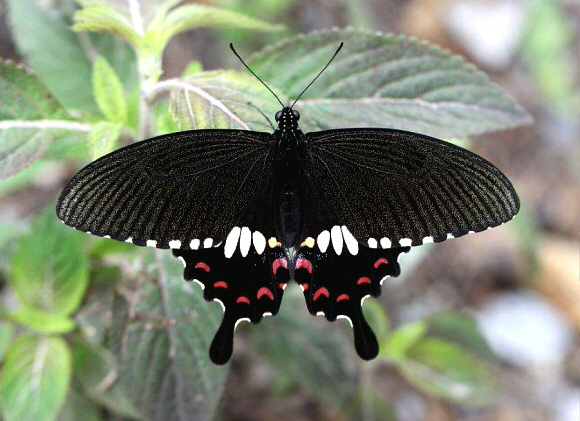
Introduction
There are about 215 species of Papilio worldwide.
Papilio polytes is palatable to insectivorous birds and produces several different female forms which mimic unpalatable Atrophaneura swallowtails. These mimetic forms include romulus f. polytes which is a near perfect double of Atrophaneura hector, and romulus f. theseus which is a superb mimic of Atrophaneura aristolochiae. Birds are unable to distinguish between mimic and model, and having had the unpleasant experience of tasting an Atrophaneura will reject the near identical but perfectly edible polytes. For human observers distinguishing between the two genera is easy though because polytes has an all-black head and body, while in Atrophaneura species these are red.
Papilio polytes is found across most of tropical and temperate Asia from India and Sri Lanka to west China and the Philippines. It ranges south through Thailand and Malaysia to Sumatra and Borneo.
Habitats
This species is found in rainforest, semi-deciduous woodland, thorn scrub, beach hinterlands, parks and gardens. It can be found at altitudes between 0-1000m.
Lifecycle
The larval foodplants include Citrus, Clausena, Fortunella, Glycosmis, Zanthoxylum, Toddalia, Aegle, Murraya, Triphasia, Euodia, Atalantia and Poncirus ( Rutaceae ).
Adult behaviour
In the early morning the butterflies fly low over the ground, and settle to bask for long periods on low vegetation, with their wings outspread. Later in the day as temperatures rise they become very active. Both sexes will nectar at Lantana and a wide variety of other wild and cultivated flowers.
